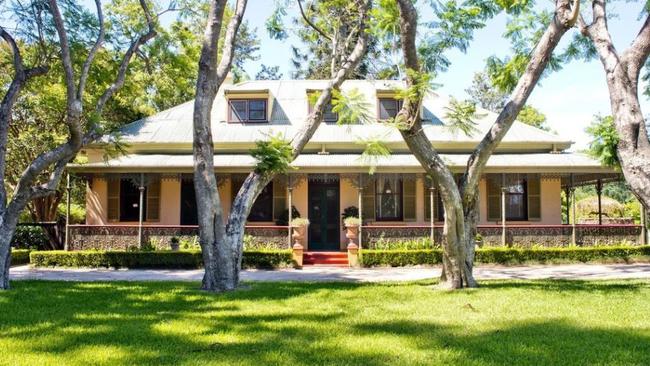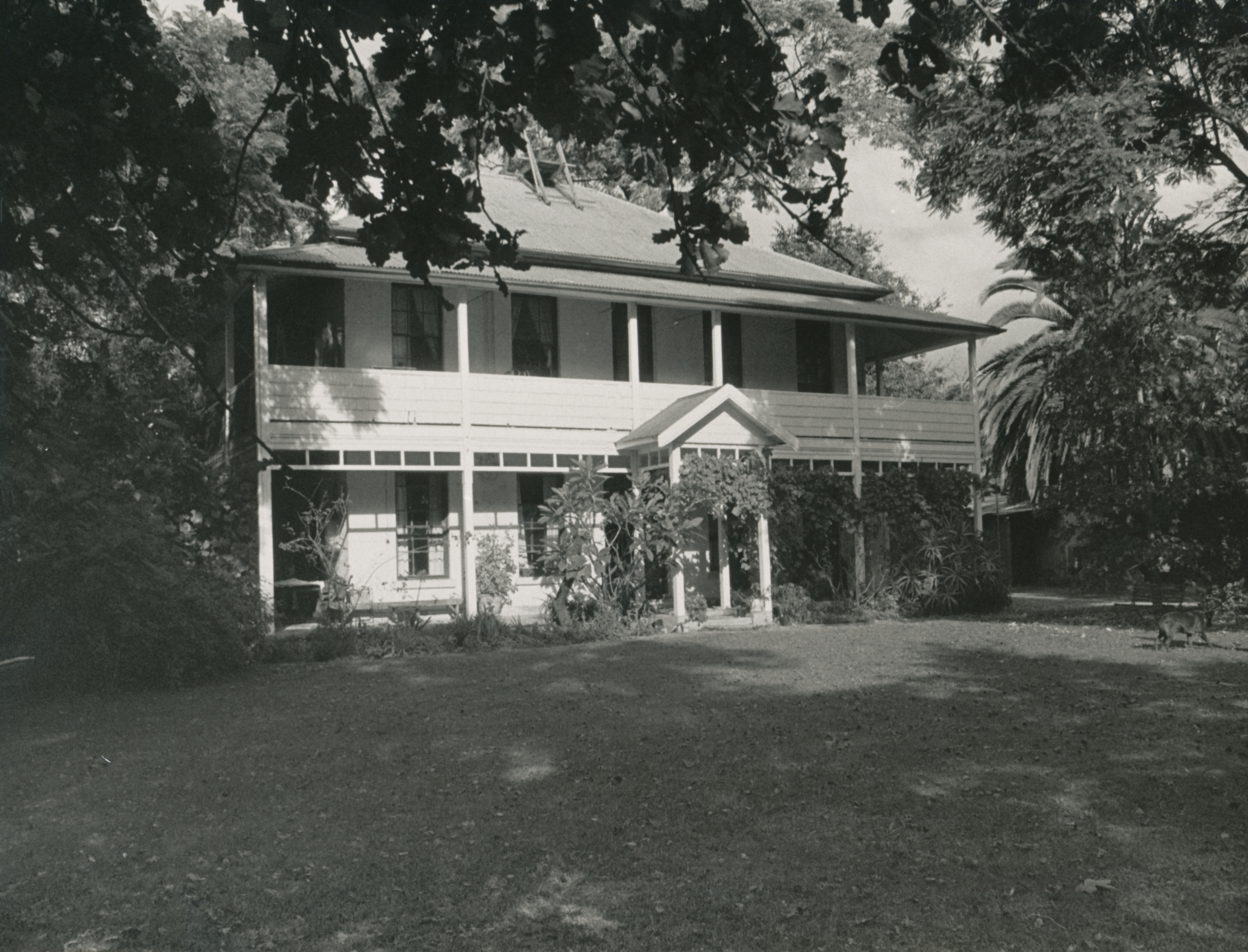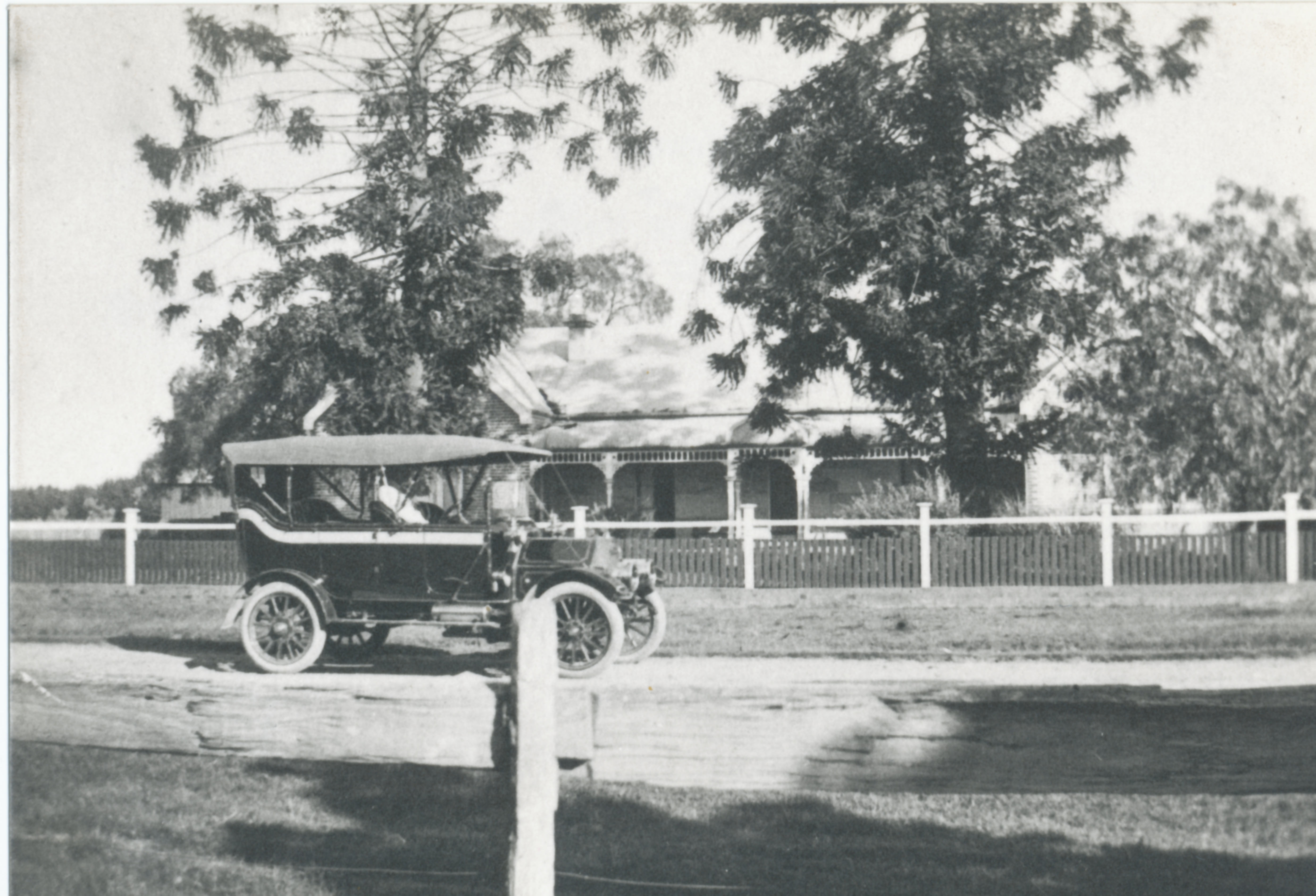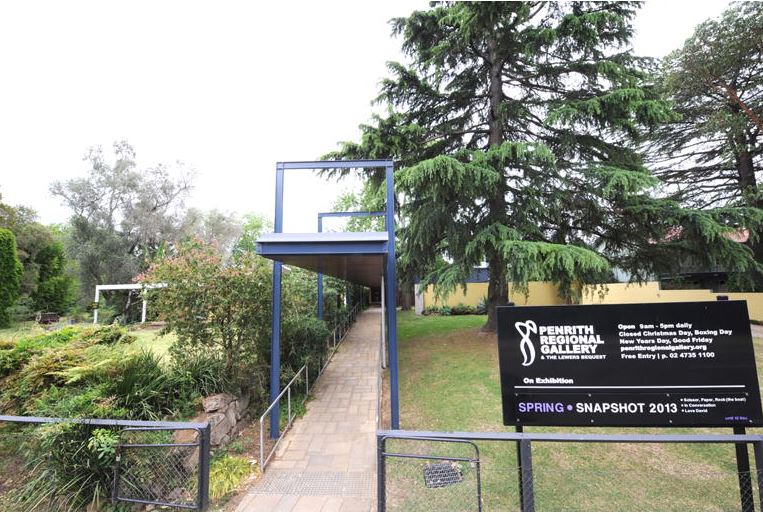Penrith City Local History - Places - Suburb profiles - Emu Plains
Emu Plains
Emu Plains is located on the western side of the Nepean River, at the foot of the Blue Mountains. The suburb of Leonay is the southern boundary, with Emu Heights the western boundary. Along with the suburb of Penrith, Emu Plains is one of the oldest districts in the Penrith Local Government Area. It is situated in pleasant and peaceful surroundings enriched with the colour of jacaranda trees and autumn tones. Emu Plains has many historic buildings and sites to visit. Situated just five minutes drive from Penrith; Emu Plains is ideally located to all amenities.
Emu Plains on Google Maps.
Emu Plains is located on the west side of the Nepean River extending to the foot of the Blue Mountains. Part of this name (i.e. “Emu”) is thought to have originated with the sighting of emus there when the country was first explored by Europeans in the late 1700’s. A survey map of 26th August 1790 has the annotation “saw three cassowaries” marked near the ford. Early explorers often confused emu with cassowary. The locality was first known as “Emu Island” – the name thought to have originated with Captain Watkin Tench (1758?-1833), who first explored the region.
In Government Orders of 16 July 1814, Governor Macquarie referred to “Emu Plains (hitherto erroneously called Emu Island)”, which officially heralded the area’s change of name. And again in October 1814, George Suttor in his correspondence with Sir Joseph Banks, mentioned that the name Emu Plains had recently been changed from Emu Island. Up to this date the area had obviously been thought of as an island. The reason for this can possibly be explained by a contemporary observer, Barron Field (1786-1846), Judge of the Supreme Court of New South Wales. Field noted that Emu Plains had been called “Emu Island” because the plains had, at times, been turned into an island by the “washing of the mountains when the Nepean ……flooded”. Another more recent explanation (offered by the late local historian and resident Arthur W. Street) claims that the name Emu Island originated because the Nepean River was divided near Emu Ford, thus forming an island. The island, Mr. Street claims, has slowly disappeared through constant excavation of gravel for building purposes. A further resolution of the confusion is detailed in the book Emu Plains by Joan Steege, where she explores all the divergent theories regarding its naming.
On 25 October, 1963, the Emu Plains area was transferred from the Blue Mountains City Council to Penrith City Council.
Emu Hall
Emu Hall was built between 1851-1854 for Toby Ryan, publican, auctioneer and parliamentarian. The house is set on a rise overlooking the Nepean River and the site is banded by the former punt crossing and the 1867 alignment of the Great Western Highway.

Emu Plains Prison
The Emu Plains Agricultural Establishment operated from 11 September 1819 until 31 August 1832. It was established by Lachlan Macquarie to take the high number of surplus convicts in the colony as well as new arrivals. The agricultural station holds an important place in the history of convict administration in New South Wales, with hundreds of convicts processed through the farm. Some had just arrived on transport ships, some were reprocessed and re-educated in agricultural work, and some remained there to give service as overseers, gardeners, watchmen, butchers and clerks.
The farm played an important economic role in the Nepean district, providing a source for the sale of goods, the employment of clearing gangs and individual assignment of convicts to local settlers. It was ideally placed to not only benefit from its agricultural richness, but also to overseer movements of convicts, settlers and stock over the mountains. Soon after the farm closed, H. F. White surveyed the land for a town. White followed the contours of the agricultural station, laying out the village and streets along roads and paddocks created by the convict farm.
Huntington Hall
Huntington Hall was built around 1850 by grazier George Tailby and was called Tailby Hall. In 1880 NSW Premier Sir George Dibbs rented the property and renamed the house Riverside. He left Riverside in 1895. It would then be leased to Frederick Wilshire, Penrith's Police magistrate and then Gustav Klaeby. In 1908 the Tailby family sold the property to John Western Tremain and his wife Florence Rose. It was the Tremain family who renamed the property Huntington Hall. ln 1933 Malcolm Niccol leased the property and opened it as a holiday guesthouse, later purchasing the property in 1936. The guesthouse closed in the early 1950s.



Police Cottage
This weatherboard police station was built in 1908, and operated as a police station until 1921. It replaced the original police station which was located next door. In early 2023 the former police cottage opened as a cafe.

Westbank
Westbank was built around 1865 and was part of a large property bought by Harriet Beard in 1876. Her sister and husband, Mrs & Mrs George Dewdney lived there with their daughters. It was subsequently leased to Richard Sheppard who had married Emily Dewdney. The property of 70 acres became a successful orchard and fields along the riverbank. Sheppard developed the imperial mandarian at his orchard.
The house is made of sandstone with the two wings on either side of the original house being added in 1906. The house was reconstructed in 1980. During World War 2, the house was commandeered by the Peter Pan Kindergarten to house evacuated children from Sydney.

Yodalla
A substantial farmhouse, it is believed to have been built in 1870. The house is set well back from the road within a mature garden, dating from the 1920s and features a verandah, dating from the same period. It was built of brick and rendered and ruled as stone. The Hunter family purchased the property in 1910 and successfully cultivated citrus orchards.

Penrith Regional Gallery & The Lewers Bequest

This art gallery was formerly the home and workplace of artists Margo and Gerald Lewers. The permanent collection is an important survey of the development of Modernism in Australian art from the early 1930s to the late 1970s. The collection focuses on abstraction and is represented by the Lewers and their contemporaries, including artists such as Ralph Balson, Yvonne Audette, Carl Plate, Frank and Margel Hinder and Tony Tuckson. The Gallery has three distinct exhibition spaces – a large purpose built gallery; the original homestead (c1900); and Ancher House, a fine example of domestic architecture from the 1960s. It is set on two acres of garden overlooking the Nepean River.
Arms of Australia Inn Museum


In 1976, the Nepean District Historical Society opened a Museum in the Arms of Australia Inn. This building dates back to 1841 and possibly earlier. It was an important stopping place for coaches and travellers on their way over the Blue Mountains and especially those going to and from the gold fields. The building was acquired by Penrith City Council and restored by members of the Society with Council and Government funding.
| 1789 | 26 June | Captain Watkin Tench set out to explore western-most parts of the colony |
| 1790 | 26 August | Tench & Dawes explored the Nepean river and ‘saw three cassowaries’ – a precursor to naming Emu Plains |
| 1806 | 12 September | Proclamation by William Bligh to prohibit crossing of the Nepean River |
| 1808 | 8 July | Rebel Governor, Major Johnston, issued a land grant at Emu Plains to his son |
| 1813 | 20 November | Surveyor Evans set out from Emu Plains to explore inland |
| 1814 | 18 July | William Cox began construction of the road over the Blue Mountains |
| 1815 | 14 January | William Cox completed first road over the Blue Mountains from Emu Plains to Bathurst |
| 1815 | 26 April | Governor Macquarie’s tour over the Blue Mountains |
| 1818 | 4 January | James ‘Toby’ Ryan born at Castlereagh, well known Emu Plains and Penrith identity |
| 1819 | 11 September | Proclamation to set up a convict Agricultural Establishment with Richard Fitzgerald as Superintendent |
| 1822 | 22 April | Scotsman Lieutenant Peter Murdoch appointed Superintendent of the convict farm at the resignation of Fitzgerald |
| 1823 | 24 March | Tenders called for toll collector at Emu Ferry |
| 1824 | December | Alexander Kinghorne appointed Superintendent of the convict farm at the resignation of Murdoch |
| 1825 | 16 May | First performance held at the convict theatre of Barissa or the Hermit Robber, The Farce of the Mock Doctor or the Dumb Lady Cured, and the favourite Bombastes Furioso |
| 1826 | February | James Kinghorne took over from his father as Superintendent at the farm |
| 1826 | 6 October | Land grant to Francis Forbes, Chief Justice of the colony of 120 acres at Emu Plains (now Leonay) which he named Edinglassie |
| 1829 | 10 September | Superintendent at Wellington Valley, John Maxwell became Superintendent at Emu Plains and Superintendent of Government Stock for the colony |
| 1831 | August | Superintendent at Grose Farm and Longbottom government farms, James Smith appointed as Superintendent at Emu Plains |
| 1832 | 20 May | Village of Emu was laid out by the Government Surveyor |
| 1832 | 31 August | Emu Plains Convict Farm officially closed |
| 1832 | 1 October | David Lennox appointed to work on “Lennox Bridge” |
| 1841 | 8 June | First licence of Arms of Australia Inn granted to John Mortimer |
| 1845 | 13 August | Government land was sold to Michael Hogan |
| 1848 | 8 November | St Paul’s Church School opened |
| 1857 | 25 July | Bridge over Nepean River washed away in flood |
| 1863 | Methodist Church built using the stones from Edinglassie house | |
| 1864 | 19 February | Mary Ryan died at Emu Hall and is buried at St Paul’s Cemetery, Emu Plains |
| 1867 | 17 June | First passenger train crosses Victoria Bridge |
| 1868 | August | First railway station opened called Emu on south side of Old Bathurst Road |
| 1872 | 16 August | St. Paul’s Church of England consecrated |
| 1873 | 19 May | Eliza Bisset appointed as postmistress at Emu Ferry |
| 1878 | 30 January | Emu Plains Railway disaster. A Katoomba train carrying kerosene shale collided with the up train |
| 1880 | Circa | Quarry site opened on alluvial gavel pit on a bend of the Nepean River at Emu Plains |
| 1885 | 20 March | The town of Emu was proclaimed |
| 1886 | 22 November | A new railway station building and stationmaster’s residence opened |
| 1887 | A Telegraph Office opened at the railway station using Morse code | |
| 1890 | At his Westbank farm, orchardist Richard Sheppard creates -by chance - a new variety of mandarin called the imperial | |
| 1896 | The Telegraph Office converted to a Telephone Office | |
| 1899 | 17 October | James ‘Toby’ Ryan died at Woolloomooloo and was buried at Emu Plains. He was a well known Emu Plains & Penrith identity |
| 1907 | 2 June | New Railway Bridge opened over Nepean River. Victoria Bridge becomes road traffic only |
| 1914 | December | Emu Plains prison farm commenced |
| 1929 | 4 January | St. Paul’s Church Rectory was destroyed by fire. All church records lost |
| 1930 | 8 April | The Mudgee mail train is robbed as it leaves Emu Plains station. The armed bandits steal £17,000 |
| 1934 | 21 December | Melrose Hall opened. Named after C.J. Melrose a famous aviator of the time |
| 1956 | Electrification of the railway line between Penrith and Emu Plains | |
| 1963 | 29 May | Nepean High School opened |
| 1963 | 25 October | Emu Plains transferred from Blue Mountains Council to Penrith City Council |
| 1973 | 11 October | Official opening of F4 Freeway Bridge over Nepean River |
| 1976 | 27 March | Arms of Australia Inn opened as a museum |
| 1980 | 3 July | Old Emu Plains Post Office destroyed by fire (formerly the Australian Arms Inn) |
| 1981 | Penrith Regional Gallery & The Lewers Bequest is opened | |
| 1982 | 15 October | Edinglassie Retirement Village opened |
| 1982 | 14 December | Lennox Bridge reopened for traffic after major restoration |
| 1986 | 28 January | McCarthy Catholic Senior High School (now Penola Catholic College) took in its first students |
| 2018 | July | Penrith Council calls for community suggestions to name the new pedestrian bridge across the Nepean River |
| 2018 | October | The pedestrian bridge is officially named Yandhai Nepean Crossing |
